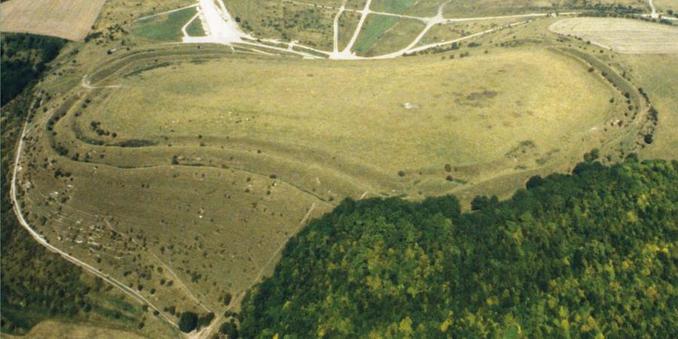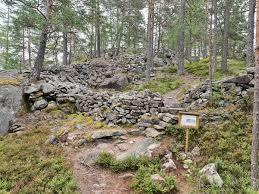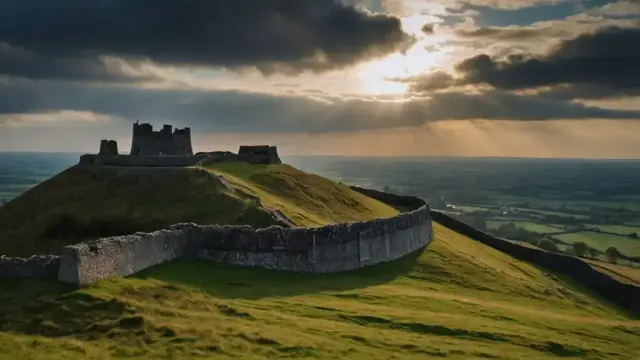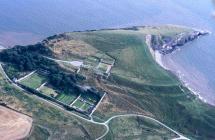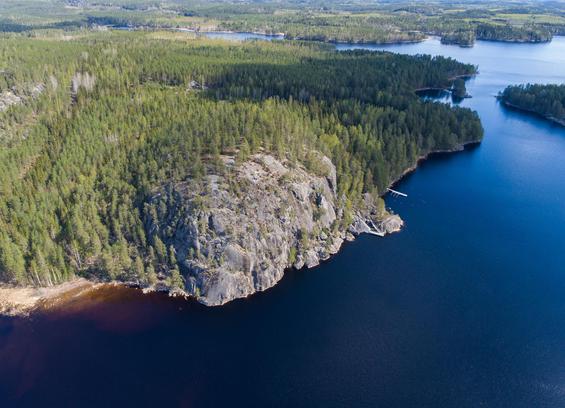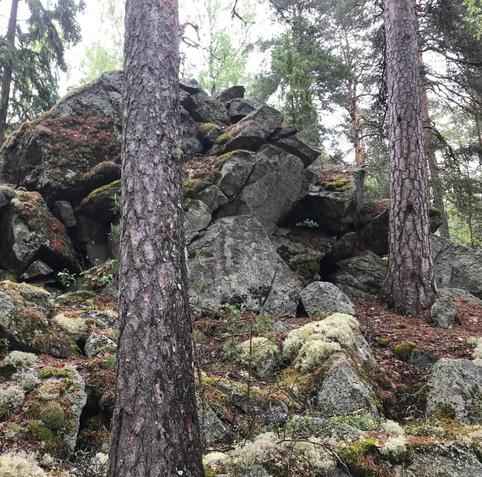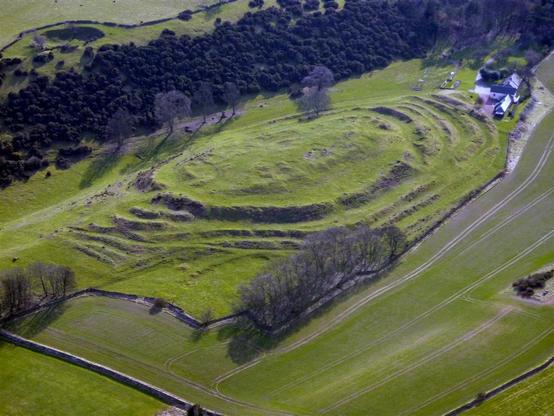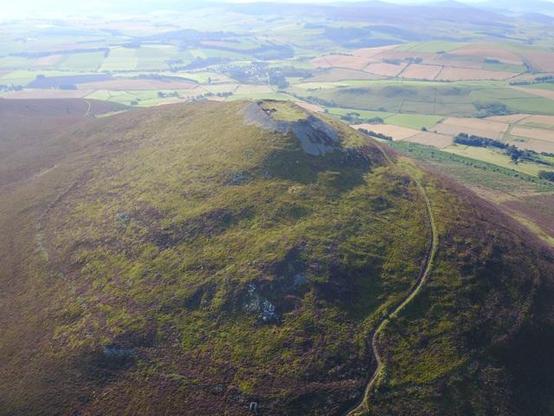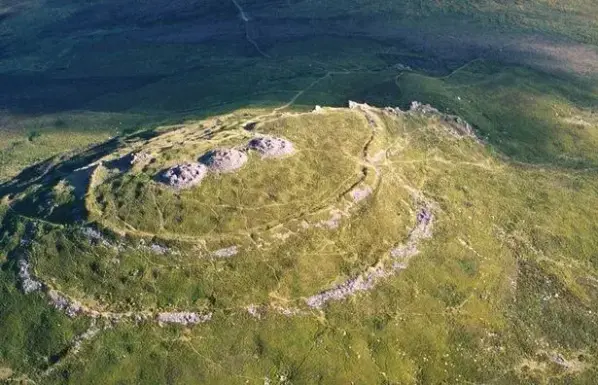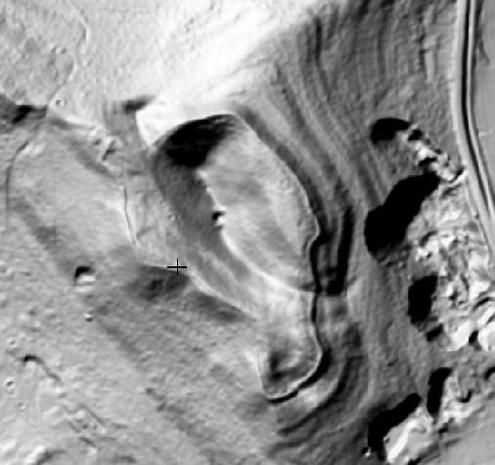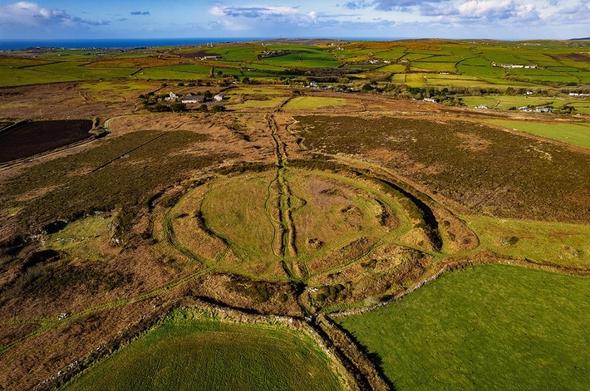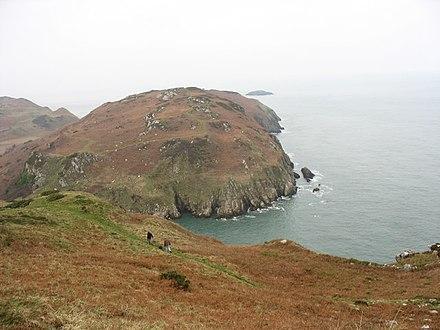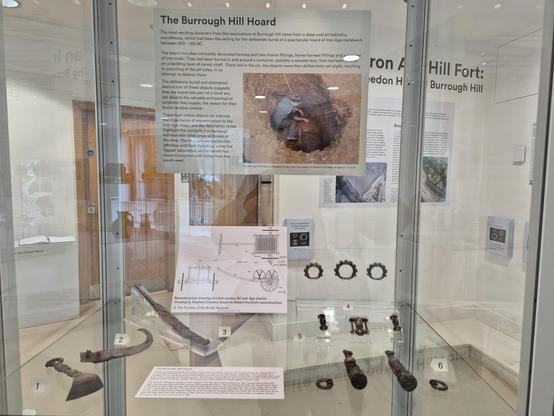Montefalcone in Italy, a Samnite hillfort in southern Italy. These hillforts date to the pre-Roman times. They are recognised on the bases of impressive limestone walls. They can enclose large areas, now deemed empty by Giacomo Fontana. #HillfortWednesday
#HillFortWednesday
Early medieval hillfort in Błonie, Mazowieckie Voivodeship in Poland. It is the remains of a ducal seat. It was erected on a watery borderland near the Utrata river. It was the fortified seat of two dukes in the 13th century. Photo: M. Bogacki © National Heritage Board of Poland #HillfortWednesday
Caerfai Camp, Penpleidiau in Welsh, is an Iron Age promontory fort in Pembrokeshire. It lies on a 0.5 ha sub-rectangular headland, enclosed by ramparts and 20 m high cliffs. It was surveyed in 1925 by the Royal Commission and in 2019 by the CHERISH project, now excavated by DigVentures. #HillfortWednesday
The bivallate Iron Age Oldbury hillfort lies 5 km west from Avebury in Wiltshire. Its defenses enclose 9 ha. There is also a hill figure of a white horse cut to the chalk on the northern side. The only excavation was in 1930 and the latest survey in 2004. #HillfortWednesday
The Iron Age hillfort at Battlesbury Camp lies near Warminster in Wiltshire. It is a bivallate hillfort that enclosed an area of 9.5 hectares. The southwest area of the hill fort is built over Bronze Age burial mounds. #HillfortWednesday
Trellsborg is a hillfort in Norway near Bø, Telemark. It has well preserved walls and layout. The western side of the hill is fortified with 3 walls. The castle top is 60m long in NNW-SE and 40m wide. It is dated to Iron Age. #HillfortWednesday
Cronk Sumark, “Primrose Hill” in English, is a Celtic Iron Age and Medieval hillfort on the northern part of Isle of Man. This twin-peaked summit, a mere 76 metres above sea level, has archaeological evidence of houses, storage facilities, and communal spaces. #HillfortWednesday
Dunraven hillfort is on an irregular headland in the Vale of Glamorgan. It rises c. 60 metres above the sea. It has double banks and ditches on the landward side, obscured by Dunraven castle. Inside are 21 possible Iron Age roundhouses, 6 metres in diameter. #HillfortWednesday
Pisamalahti hillfort is an Iron Age site above the Lake Saimaa in Finland. It has steep slopes to three directions so it needed built defence only in the east. There are still remains of a stone foundation, 3 metres wide and 2 metres high, of a wooden palisade. #HillfortWednesday
Siuro hillfort in Nokia, Finland. This hillfort belongs to a series of Iron Age hillforts in western Finland reaching Kaustinen. The built defences were on the northern side where they run for hundreds of metres. The wooden palisade lied on a stone foundation. #HillfortWednesday
Chesters hillfort lies in North Berwick in East Lothian in Scotland. It was built during the first millennium BC and was occupied into the early centuries of the first millennium AD. Several houses are visible within the fort, some later than the defences. #HillfortWednesday
Tap O’Not is a hillfort near Rhynie in Aberdeenshire. The rampart inclosed an area of 17 acres and dated to the 5t-6th centuries AD. The settlement may go back to the 3rd century AD to the Pictish times. Inside were multiple huts up to 4,000 people. #HillfortWednesday
Foel Trigarn is an Iron Age hillfort in Wales. It lies on the easternmost ridge on Mynydd Preseli and it dominates the skyline in eastern Pembrokeshire. Photo: Crown Copyright: Royal Commission on the Ancient and Historical Monuments of Wales/Hawlfraint. #HillfortWednesday
Hembury Hillfort, Devon
Multivallate Iron Age hillfort that occupies the site of an earlier Neolithic causewayed enclosure. Used 1st century CE as the base for a unit of Roman army.
Since 2022 the site has been owned and managed by Devon Archaeological Society. Volunteers carry out maintenance and clearance to ensure the monument's long-term wellbeing. They also take care of its important nature conservation in consultation with the Devon Wildlife Trust.
The Rapola hillfort lies above the Lake Vanaja in Sääksmäki, Valkeakoski, Finland. Its banks are about 1 kilometre long. They enclose an area of 52,000 squaremetres. It was probably built during the Viking Age AD 800-1000. It is famous for the King of Rapola. #HillfortWednesday
Chûn Castle is located on the summit of Chûn Downs with sea views. It is circular with two stone walls, each with an external ditch. Within are the remains of several stone walled round houses. It was used from the 3rd century BC to the early 1st century AD. #HillfortWednesday
Caer Bran Hillfort in Sancreed, Cornwall, lies on the top of Brane Hill. It consists of two concentric rings of defensive ditches & ramparts roughly 115m in diameter with an enclosed area of about 60m across. It dates from both the Bronze Age and the Iron Age. During the Bronze Age Caer Bran is thought to have consisted of three small ring cairns set within a hill top enclosure or larger ring cairn. I the Iron Age the site was re-enclosed. #HillfortWednesday
Dinas Gynfor is a promontory hillfort on Anglesey in Wales. It is naturally defended by cliffs on three sides and in the south there is a double row of wall. It is dated to the Iron Age. It lies in a Site of Specific Scientific Interest due to its geology. #HillfortWednesday
Burrough Hill is a univallate Iron Age hillfort in Leicestershire. It has been lately been studied by the University of Leicester and presented in the Life in an Iron Age hillfort exhibition at Nottingham. The most intensive period was in 100-50 BC. #HillfortWednesday
Denmark does not really have hills so there during the Viking Age people built real fortresses. There are five of these ring fortresses. Inside each quadrant has one square blocks of longhouses. The forts were built c. AD 980. #HillfortWednesday




